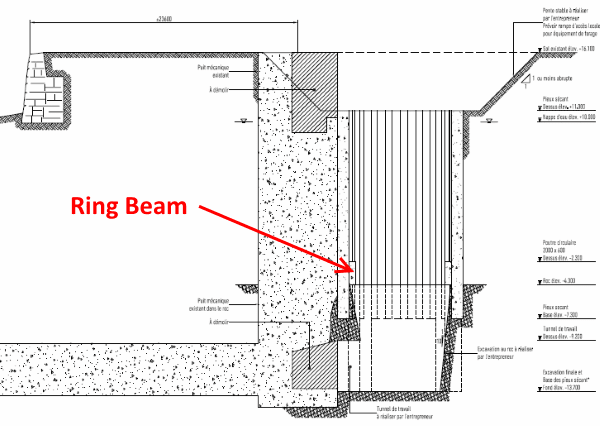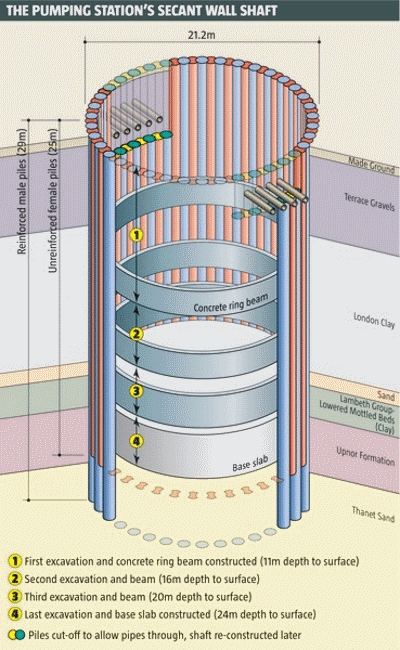hemiv
Structural
- Dec 7, 2018
- 82
I’m doing some design work for a circular shaft. It’s basically just secant piles supporting themselves in ring compression. I’ve used DeepEX to do some modeling, but that software assumes fully uniform loading around circular shaft walls. Part of our design criteria is to consider nonuniform loads causing the shaft to bend and “egg.” I’ve done some modeling of the cross-section in RISA, but I thought maybe some of you could provide input as to how much load non-uniformity is considered in these types designs. I know conceptually that as the shaft walls deflect, they will begin to engage passive pressures as needed, thereby making the loads more uniform and stabilizing the walls. The questions in my mind are (a) how much deflection is required to engage passive pressures and (b) will my structure fail at or before this required deflection. A quick search yields a good number of examples of these types of designs being built - DeepEX’s website, for one - so, I know there is precedent for this design.
PS - is this a case where the geotech should be giving me horizontal subgrade modulus in order to analyze the non-uniform loading appropriately? If so, I’ll just have to bug them to that value.
PS - is this a case where the geotech should be giving me horizontal subgrade modulus in order to analyze the non-uniform loading appropriately? If so, I’ll just have to bug them to that value.

![[idea] [idea] [idea]](/data/assets/smilies/idea.gif)


